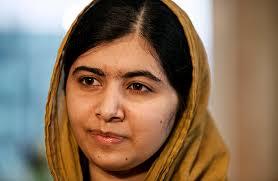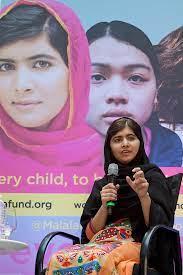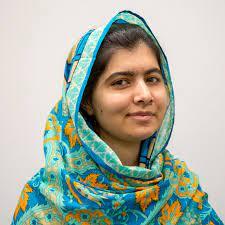I am Malala- The Story of the Girl Who Stood Up for Education

Book: I am Malala- The Story of the Girl Who Stood Up for Education
Author: Malala Yousafzai
Catergory: Non-fiction: Autobiography
This book is about a life story of a girl who was shot in the head at the Age of 15, by Taliban terrorists in Pakistan for her campaign for the education of girls…
This book is about a life story of a girl who was shot in the head at the Age of 15, by Taliban terrorists in Pakistan and later became the youngest Nobel Peace Prize laureate, at the age of 17…
Yes, This book is an autobiography of the youngest Nobel Peace Prize laureate…Malala Yousafzai. In this book she writes about her journey that how she Stood Up for Girls Education…

Prologue from the book …
I am Malala- The Story of the Girl Who Stood Up for Education

I COME FROM a country which was created at midnight. When I almost died it was just after midday.
One year ago I left my home for school and never returned. I was shot by a Taliban bullet and was
flown out of Pakistan unconscious. Some people say I will never return home but I believe firmly in
my heart that I will. To be torn from the country that you love is not something to wish on anyone.
Now, every morning when I open my eyes, I long to see my old room full of my things, my clothes
all over the floor and my school prizes on the shelves. Instead I am in a country which is five hours
behind my beloved homeland Pakistan and my home in the Swat Valley. But my country is centuries
behind this one. Here there is any convenience you can imagine. Water running from every tap, hot or
cold as you wish; lights at the flick of a switch, day and night, no need for oil lamps; ovens to cook on
that don’t need anyone to go and fetch gas cylinders from the bazaar. Here everything is so modern
one can even find food ready cooked in packets.
When I stand in front of my window and look out, I see tall buildings, long roads full of vehicles
moving in orderly lines, neat green hedges and lawns, and tidy pavements to walk on. I close my eyes
and for a moment I am back in my valley – the high snow-topped mountains, green waving fields
and fresh blue rivers – and my heart smiles when it looks at the people of Swat. My mind transports
me back to my school and there I am reunited with my friends and teachers. I meet my best friend
Moniba and we sit together, talking and joking as if I had never left.
Then I remember I am in Birmingham, England.
The day when everything changed was Tuesday, 9 October 2012. It wasn’t the best of days to start
with as it was the middle of school exams, though as a bookish girl I didn’t mind them as much as
some of my classmates.
That morning we arrived in the narrow mud lane off Haji Baba Road in our usual procession of
brightly painted rickshaws, sputtering diesel fumes, each one crammed with five or six girls. Since
the time of the Taliban our school has had no sign and the ornamented brass door in a white wall
across from the woodcutter’s yard gives no hint of what lies beyond.
For us girls that doorway was like a magical entrance to our own special world. As we skipped
through, we cast off our head-scarves like winds puffing away clouds to make way for the sun then
ran helter-skelter up the steps. At the top of the steps was an open courtyard with doors to all the
classrooms. We dumped our backpacks in our rooms then gathered for morning assembly under the
sky, our backs to the mountains as we stood to attention.
One girl commanded, ‘Assaan bash! ’ or ‘Stand at ease!’
and we clicked our heels and responded, ‘ Allah.’
Then she said, ‘ Hoo she yar!’ or ‘Attention!’
and we clicked our heels again. ‘Allah.’
The school was founded by my father before I was born, and on the wall above us KHUSHAL
SCHOOL was painted proudly in red and white letters.
We went to school six mornings a week and as a fifteen-year-old in Year 9 my classes were spent chanting chemical equations or studying Urdu grammar; writing stories in English with morals like ‘Haste makes waste’ or drawing diagrams of blood circulation – most of my classmates wanted to be doctors. It’s hard to imagine that anyone would see that as a threat. Yet, outside the door to the school lay not only the noise and craziness of
Mingora, the main city of Swat, but also those like the Taliban who think girls should not go to school.
